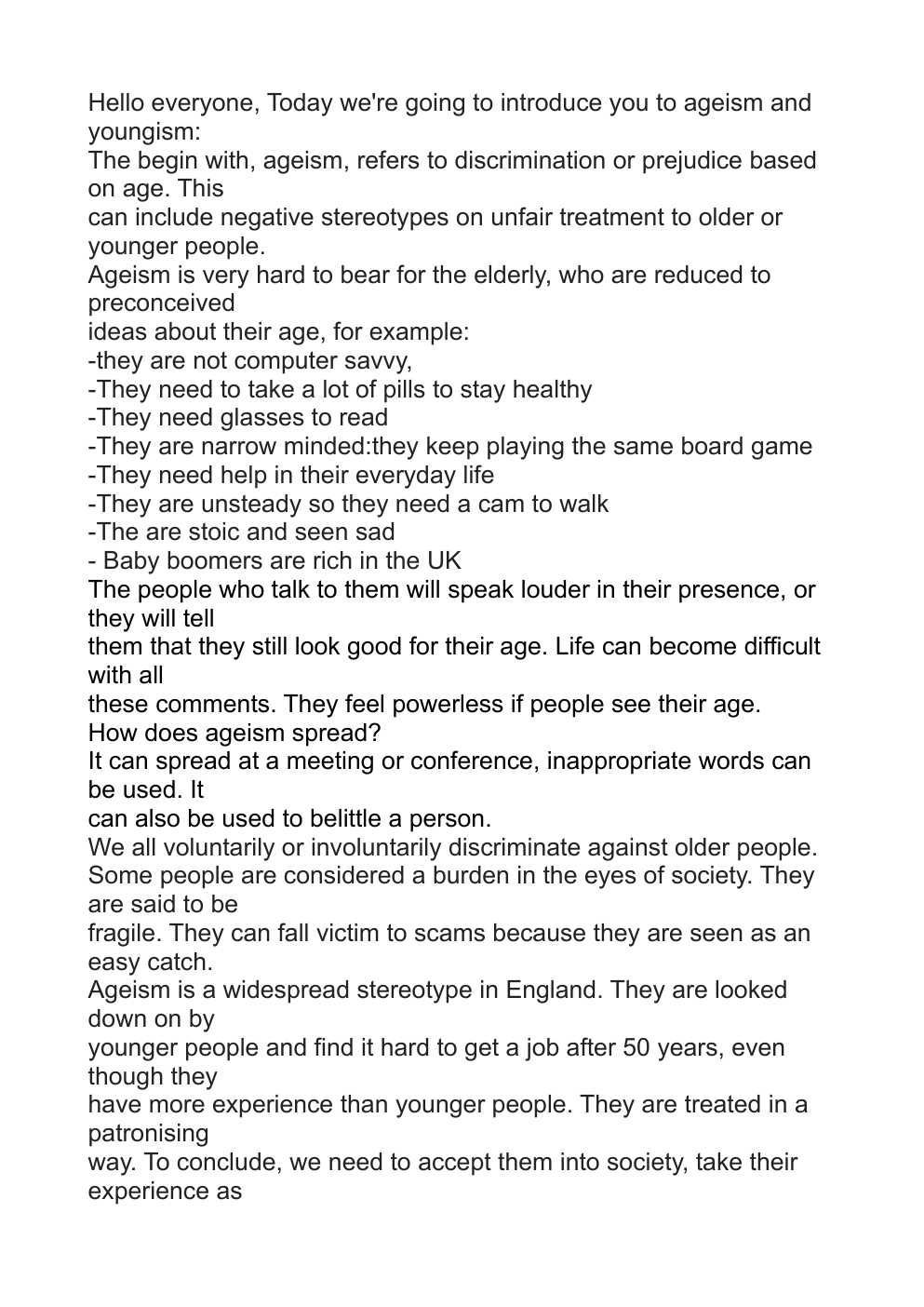yougism and ageism
Publié le 06/01/2024
Extrait du document
«
Hello everyone, Today we're going to introduce you to ageism and
youngism:
The begin with, ageism, refers to discrimination or prejudice based
on age.
This
can include negative stereotypes on unfair treatment to older or
younger people.
Ageism is very hard to bear for the elderly, who are reduced to
preconceived
ideas about their age, for example:
-they are not computer savvy,
-They need to take a lot of pills to stay healthy
-They need glasses to read
-They are narrow minded:they keep playing the same board game
-They need help in their everyday life
-They are unsteady so they need a cam to walk
-The are stoic and seen sad
- Baby boomers are rich in the UK
The people who talk to them will speak louder in their presence, or
they will tell
them that they still look good for their age.
Life can become difficult
with all
these comments.
They feel powerless if people see their age.
How does ageism spread?
It can spread at a meeting or conference, inappropriate words can
be used.
It
can also be used to belittle a person.
We all voluntarily or involuntarily discriminate against older people.
Some people are considered a burden in the eyes of society.
They
are said to be
fragile.
They can fall victim to scams because they are seen as an
easy catch.
Ageism is a widespread stereotype in England.
They are looked
down on by
younger people and find it hard to get a job after 50 years, even
though they
have more experience than younger people.
They are treated in a
patronising
way.
To conclude, we need to accept them into society, take their
experience as
an example, be kind because they may need our help and we can
show them the
new methods we've acquired for working.
If everyone exchanges
ideas, there
can be good team cohesion.
To conclude, the consequences of ageism are a deterioration in mental
health.
Age discrimination is not only unfair, it is illegal.Studies show that older
people
are often not consulted about their care preferences and can be....
»
↓↓↓ APERÇU DU DOCUMENT ↓↓↓
Liens utiles
- Do you believe that pop culture has made women nudity and body an object ?
- The danger of space exploration on the human body and the environment
- ART AND POWER
- Oral anglais Master and servants
- Article - The power of words - Words, a powerful political and social weapon ?


